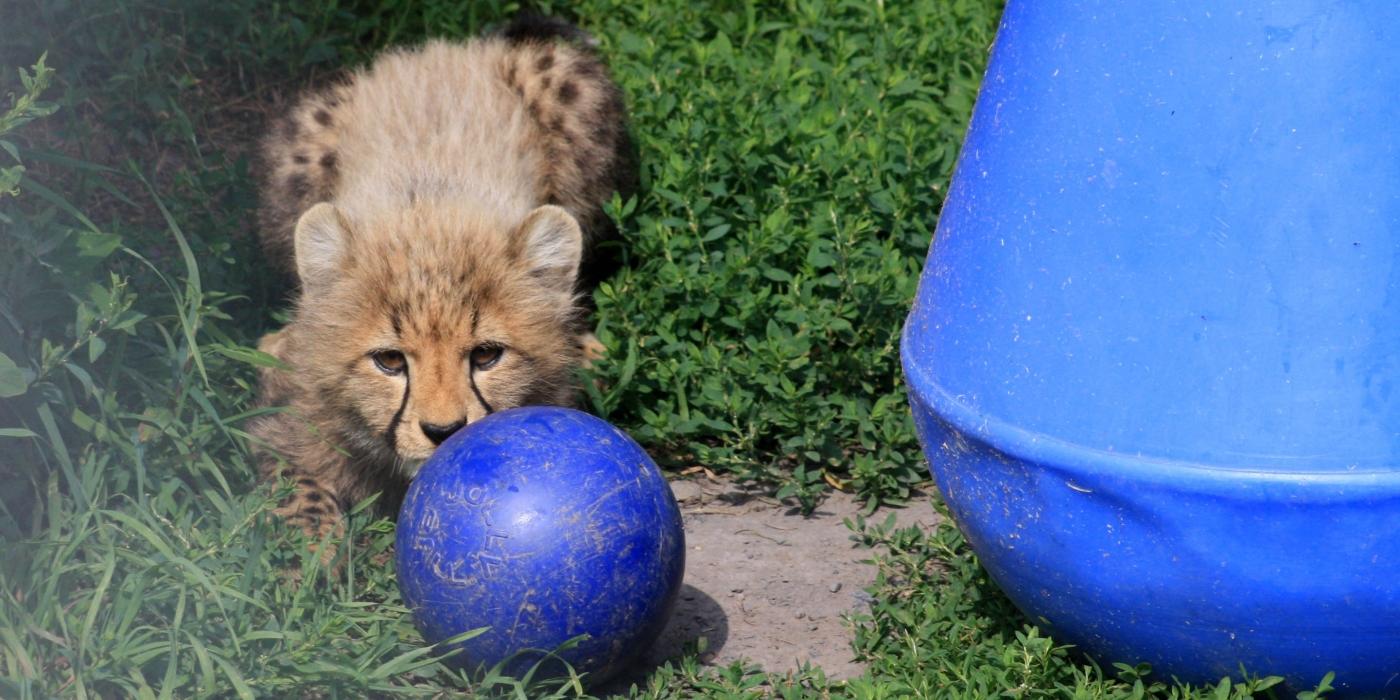Bringing the Zoo to You: July 2020
Grab a delicious snack with prehensile-tailed porcupine Quilliam, have a ball watching our cheetah cubs play and behold beaver Aspen as he fells a tree. July brought about many exciting moments, not the least of which was the reopening of the Smithsonian’s National Zoo! Before you plan your visit, get up to speed on the adorable animal antics that took place last month as told by our amazing and dedicated animal care team.
Meerkat | Small Mammal House
Getting ready to enjoy favorite summertime meal? Grab a grub with Dogo, our 12-year-old meerkat! Keepers feed him live insects to stimulate his natural forging behaviors. Here he’s munching on mealworms as part of his dinner!
Beaver | American Trail
Timber! Beavers are pro lumberjacks and one of the few species in North America to significantly modify their environment. As Aspen demonstrates here, beavers gnaw through a tree or branch and use the freshly cut pieces to construct watertight dams.These dams provide a home for the beavers and create slow-moving ponds, which provide aquatic habitats for dozens of other species!
Black-and-White Ruffed Lemur | Lemur Island
Wake up call! Our black-and-white-ruffed lemurs Aloke and Wiley are sounding off with an alarm call. They do this behavior for various reasons, though in general it is a response to a disturbance in their norm, either visual or auditory. Interestingly, lemurs have different calls based on whether they spot ground or areal predators. Aloke and Wiley will sometimes alarm call when loud noises—such as keeper radio calls—spook them. Even the ducks and turtles that cohabitate with them on Lemur Island can cause these reactions. Mostly, though, they seem to alarm call when there is a favorite food in the habitat and they want the ring-tailed lemurs to know they have first dibs!
Sloth Bear | Asia Trail
It's grub time for Niko! Sloth bears tear and rip away bark to expose their food. Listen closely to Niko blowing the dirt and debris away, and then sucking up the uncovered termites!
Pale-Headed Saki | Small Mammal House
Sound on to hear our Saki monkeys happily eating some nuts! Pale-headed saki monkeys vocalize to maintain territorial boundaries and strengthen social bonds between pairs. Here you can hear some chirps and trills between munches.
Prehensile-Tailed Porcupine | Small Mammal House
Grab a snack with Quilliam, our 8-month-old prehensile-tailed porcupine! Keepers rewarded him with a slice of banana after a training session. These porcupines are herbivores and eat leaves, flowers, shoots and roots in the wild. At the Zoo, Quilliam gets biscuits, root vegetables, nuts and greens for his primary diet!
Tamandua | Small Mammal House
Good morning from Manny, the southern tamandua! Keepers put out mealworms to get him up and going for the day. Once southern tamanduas are awake, they are typically active for an eight-hour period.
American Bison | American Bison
We teamed up with Howard University and Gallaudet University to name our two new juvenile female American bison! Meet “Lucy,” named in honor of Lucy Diggs Slowe, the first dean of women at Howard University and the first African American woman to hold that position at an American university. She was also a national tennis champion and the first Black woman to win a major sports title. “Gally” was named after Gallaudet's mascot who has been an enduring and central figure enjoyed by many Gallaudet generations.

Hartmann's Mountain Zebra | Smithsonian Conservation Biology Institute
What’s black, white and adorable all over? Our newborn Hartmann’s mountain zebra at the Smithsonian Conservation Biology Institute! He arrived July 2 and is the first of his species born at our Front Royal facility. Keepers report that mother Mackenzie appears to be taking great care of him.

Cheetah | Smithsonian Conservation Biology Institute
Cheetah cubs Amabala, Jabari, Hasani and Erindi are becoming more curious about the world around them! SCBI keepers gave them new food + enrichment toys to keep them healthy and hone their hunting skills. Learn more in the latest cheetah cub update.

Beaver | American Trail
On July 9, American Trail keepers celebrated Chipper’s 20th birthday! Our oldest North American beaver shared a healthy and delicious ice cake with his exhibit mate, Aspen. Keepers in the Department of Nutrition Sciences whipped up a wonderful treat made of frozen diluted apple juice with shredded greens and slices of apple, carrot and sweet potato comprising the colorful tiers. They topped it off with rodent chow “sprinkles” and corn on the cob “candles.” Join us in wishing him a happy birthday!
This story was featured in the August 2020 issue of National Zoo News.
Due to COVID-19, we’ve implemented new safety protocols, procedures and guidelines to provide a safe and great experience for our visitors, staff and animals. Plan your visit and reserve free timed entry and paid parking passes here.
Related Species:




